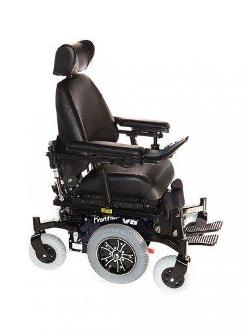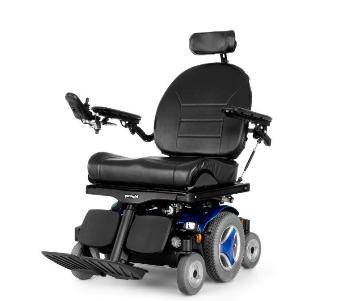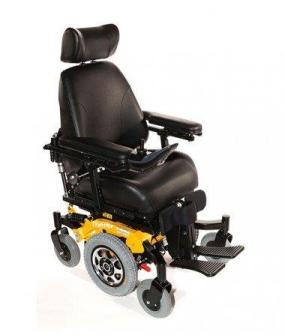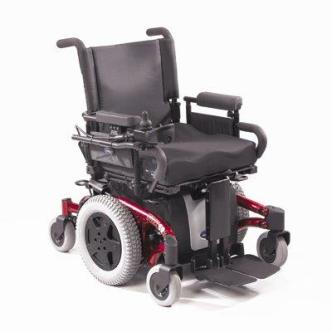More Details
Frame
* Mid wheel drive rigid frame
* Choice of frame colour
Power Options
* 300mm seat elevation (lift), seat tilt (up to 50 degrees), power legrest, power backrest, anti-shear backrest
Postural accessories
* Straps and Harnesses include chest, ankle, posture belts
* Pads and Support include knee, hip, abduction, thoracic
Seat
* Choice of flatboard, seat cushions, custom padding
* MPS seat, back and headrest (410 - 610mm wide)
Upholstery
* Synthetic fabric
Backrest
* Choice of Rehab (340 - 610mm wide), DG, custom bolsters, foam in place
Headrest
* Choice of Rehab, contoured, L-type, Y-type, soft cushions
Armrests
* Choice of 100mm, 75mm, waterfall, gutter, gel
Legrest
I* Choice of Centre post, side mount, drop in, swing away
Footplates
* Choice of one or two piece fixed/flip up/angle adjustable
Wheels
* 14 inch alloy wheels with split rims
Castors
* Four castors. 220mm x 65mm
Brakes
* Automatic
Controls
* Joystick mounts can be drop down, swing away
* Special controls include head, attendant, chin, foot, environmental
Batteries
* 2 x 73 amp/hr gel
* Optional USB charger
Motor
* 68Nm Torque, 800W, GIL
Transport or Dismantling
* Optional tie downs
Considerations
Transport Accessibility
The space allowed on public transport for carrying mobility equipment is an area of 1300mm by 800mm.
Wheelchair spaces
All new Sydney buses feature special 'kneeling suspension' and a ramp to provide easy access for less mobile passengers.
There are spaces for two wheelchairs on the new buses. These will accommodate most manual and electric wheelchairs with maximum length 1250mm, maximum width 750mm, maximum turning circle1500mm and maximum weight 200kg.
For safety reasons, passengers in wheelchairs are advised to face the back of the bus, bracing their wheelchair against the side of the space, applying the brakes and securing the seat belt of the wheelchair.
Wheelchair accessible buses display a blue and white wheelchair sign on the front of the bus, and on the easy access door.
Occupied Wheelchair in a Car
A person sitting in a wheelchair within a car or van requires certification and RTA approval for the wheelchair and occupants restraint system where the wheelchair or occupant are restrained to the vehicle structure. RTA approval is not required for a postural support, such as a harness, that is only attached to the wheelchair and not to the vehicle.
Wheelchair Restraints
When transporting a person in a wheelchair in a car or van, both the occupant and the wheelchair require an RTA approved restraint system. The wheelchair and the occupant need to be separately secured to the vehicle itself.
RTA approval is not required for a postural support, such as a harness, that supports the user in the wheelchair but is not part of the vehicle restraint system.
The use of a headrest is not legally required but strongly recommended. Easily detachable, folding headrests which fit a wheelchair with standard push handles are available. Refer to section Wheelchair, Scooter, Cushions, ramps / Postural Supports - Seating System: Restraint+ Head+Back+Seats
Place Of Manufacture
Magic Mobility (Victoria, Australia)
Price Guide
Contact supplier for pricing



 subscribers
subscribers 






